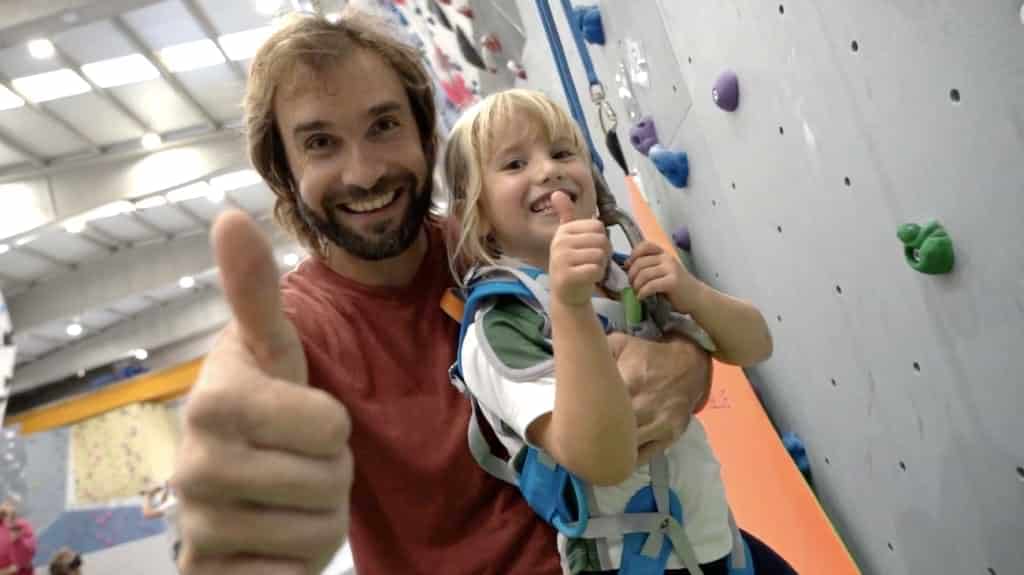Which are you? Someone who loves scary movies and is always in line for the latest release? Or someone who considers The Nightmare Before Christmas to be more nightmare than holiday? Why is it that some people love to scare themselves while others don’t enjoy the same thrill? Some of the reason may have to do with our experiences as kids. New research is exploring how adventure or risky play, including the element of fear, can benefit kids in the long run. It turns out there are significant benefits of risk taking for children.
“The dangers of life are infinite, and among them is safety.”
— Johann Wolfgang von Goethe
Adventure as Play
Play has been called the work of children and is an important part of their development. It helps introduce kids to the world and to each other while also helping them build skills and confidence. In fact, play is such a critical part of childhood that the United Nation’s recognizes leisure, play, and recreation in the “Convention on the Rights of a Child”. Where does risky play or adventure play fit in?
The research is still developing, but it appears that risk taking and fear are an important and natural part of childhood play. Researchers have observed that all kids push their boundaries and take part in some level of risky play, such as climbing up high or going fast. It appears that kids have an understanding of their own boundaries, though, and will attempt risky play that just reaches those boundaries. (1)
“If you risk nothing, then you risk everything.”
— Geena Davis
Benefits of Risk Taking for Children
Ok, so kids will push their boundaries and attempt risky play. Why do they do this and are there benefits to risk taking during play? To start, Ellen Sandseter, a professor of early childhood education in Norway, defined six categories of risky play: play at heights, play with high speed, play with dangerous tools, play near dangerous elements, rough-and-tumble play, and play where kids could become lost (2). These are areas that kids will explore through play as they build confidence and increase their skills.
In one study, classrooms of children between the ages of 4 and 6 were exposed to these categories of risky play during school (all categories except for exposure to play near dangerous elements) while other classrooms were not exposed to risky play. After 3 months, the results showed that the kids given an opportunity to partake in risky play had improved risk perception and competence compared to the other kids. That means that these skills can be improved over time and these improved skills are a benefit of risky or adventure play. (3)
“I am always doing that which I cannot do, in order that I may learn how to do it.”
— Pablo Picasso
Advantages of Fear
So kids who experience risky play are better are perceiving risk and have higher competence at navigating these risks (3). What about the times when that is not true and kids get hurt? How are we supposed to let kids take risks with the worry of injury looming overhead?
Part of play and adventure for kids is trying new things and learning to test your limits, and sometimes kids may go beyond their limits and fall. Turns out this is also a natural part of childhood that actually provides some benefits of its own. Research found that kids who actually experienced an injury due to falling before the age of 9 did not have a greater fear of heights when they were older (4). In fact, these kids who had injured themselves falling had less fear of heights later, indicating that these experiences actually had an anti-phobic effect.
“Prepare the child for the path, not the path for the child.”
— Betsy Brown Braun
Learn and Improve
The goal in life is not to be fearless; fear is a natural part of life if you have a functioning amygdala in your head. Through adventure play, kids can improve their skills for dealing with risky situations and reduce their likelihood of developing fears that could hold them back. Luckily, there are many opportunities for adventure play these days.
For example, rock climbing gyms are growing in popularity across the country and adventure activity destinations, like ropes courses or adventure parks, are popping up in many locations. These provide controlled environments to test your limits and face your fears. So regardless of whether or not you like scary movies, how about when it comes to adventure activities like rock climbing, jumping off 80 foot towers, and zip lining; are you in or are you out?
“Only those who will risk going too far can possibly find out how far it is possible to go.”
— T.S. Eliot
SOURCES:
- Brussoni, M., Olsen, L. L., Pike, I., Sleet, D. A. (2012). Risky Play and Children’s Safety: Balancing Priorities for Optimal Child Development. International Journal of Environmental Research and Public Health, 9(9), pages 3134-3148. http://dx.doi.org/10.3390/ijerph9093134
- Sandseter, E. B. H. (2007). Categorising risky play – how can we identify risk-taking in children’s play?. European Early Childhood Education Research Journal, 15(2), pages 237-252. http://dx.doi.org/10.1080/13502930701321733
- Lavrysen, A., Bertrands, E., Leyssen, L., Smets, L., Vanderspikken, A., De Graef, P. (2015). Risky-play at school. Facilitating risk perception and competence in young children. European Early Childhood Education Research Journal, pages 1-17. http://dx.doi.org/10.1080/1350293X.2015.1102412
- Sandseter, E. B. H., Kennair, L. E. O. (2011). Children’s Risky Play from an Evolutionary Perspective: The Anti-Phobic Effects of Thrilling Experiences. Evolutionary Psychology, 9(2), pages 257-284. http://dx.doi.org/10.1177/147470491100900212




Leave a Reply